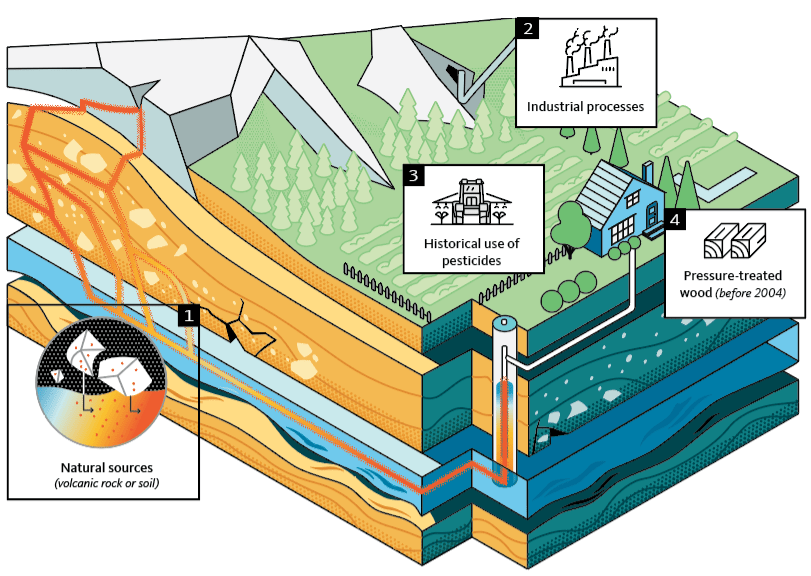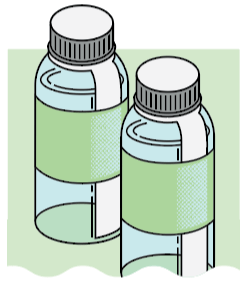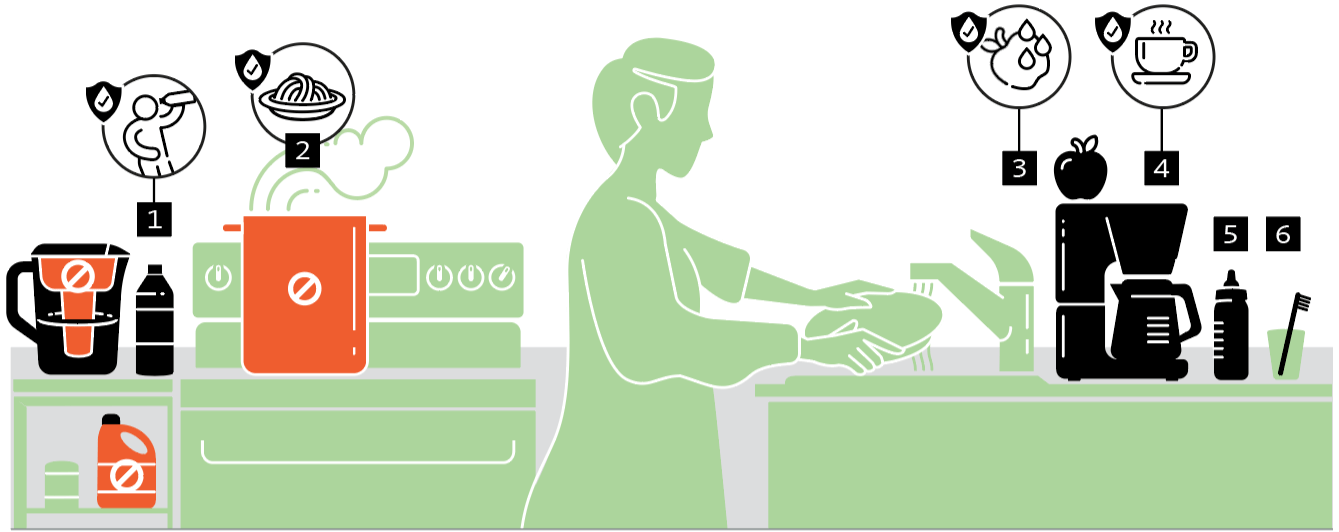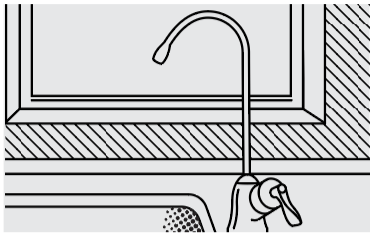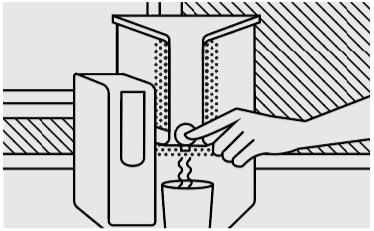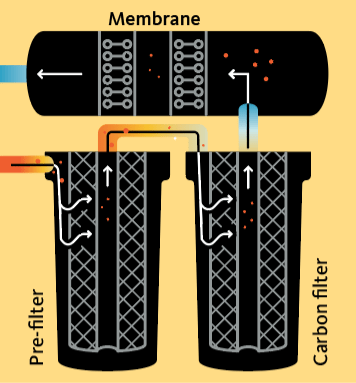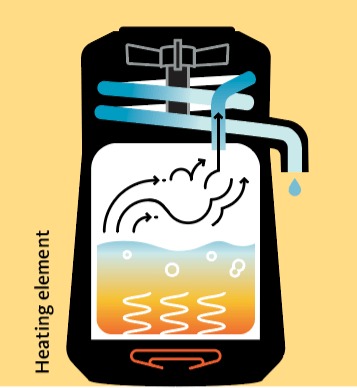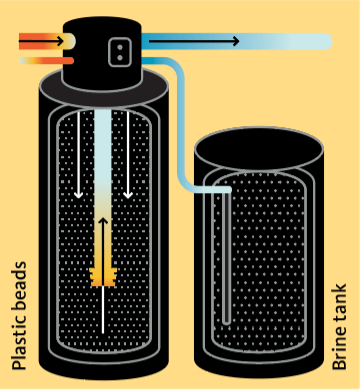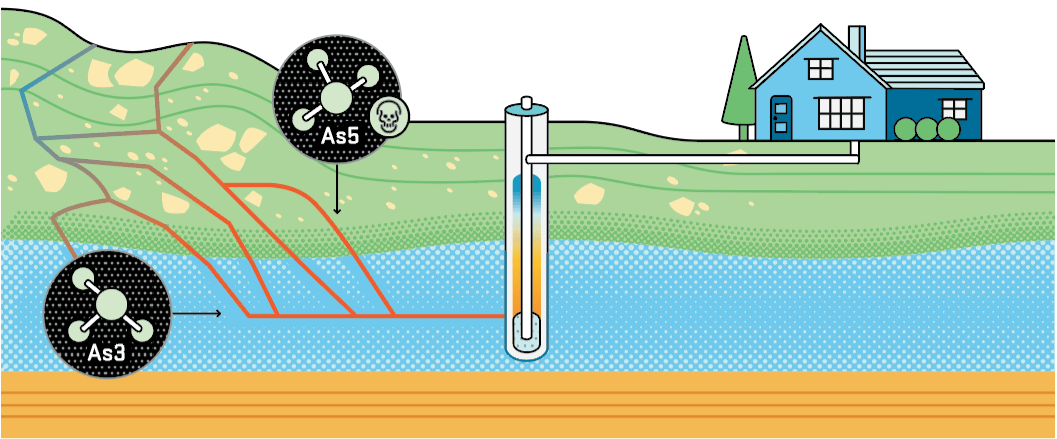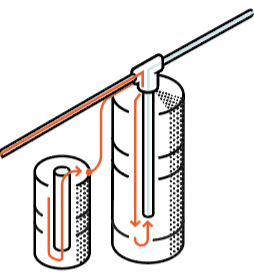What is arsenic?
Arsenic is a colorless, odorless and tasteless toxic metal.
How do you know if you have arsenic in your well water?
The government does not test private well water. It is up to you. Testing your water is the only way to know if arsenic is present.
How does arsenic get in your well water?
Arsenic in groundwater can come from natural sources (volcanic rock or soil), industrial processes (mining or smelting) or historical use of arsenic based pesticides and pressure-treated wood before 2004.
Why should you be concerned about drinking water contaminated with arsenic?
Arsenic is a known health hazard. It is toxic even at very low levels. When you drink water that contains elevated levels of arsenic over a long period of time, it will damage your body. That damage builds up over time and is linked to many health problems. Once you stop drinking water that contains arsenic, your body gets rid of it, but the damage may be irreversible.
What are the most common health effects linked to drinking water contaminated with arsenic?
Arsenic can increase the risk of these health effects:
- Type 2 diabetes
- Cancers (skin, liver, bladder, kidney, lungs)
- Skin conditions (lesions, discoloration, abnormalities)
- Stroke
- Impaired nerve function
- Bronchitis
- Heart attack
- High blood pressure
Arsenic can increase the risk of these health conditions in children:
- Developmental defects
- Risk of respiratory illness
During pregnancy, arsenic can increase the risk of these health conditions:
- Stillbirth
- Miscarriage
- Premature birth
- Low birth weight
For more details, please visit the Agency for Toxic Substances and Disease Registry. Reach out to your health care provider if you are concerned about arsenic exposure.
Testing options
Where can you get your well water tested?
You can find accredited labs in Oregon by visiting the Oregon Health Authority.
The laboratory will supply a water collection kit with instructions on how to collect, store, and send your water sample.
How much will a test cost?
The test will cost between $30 and $45.
Be sure to contact several labs about price and logistics before ordering tests.
How often should you test for arsenic?
You should test your water for arsenic every one to three years. If you have never tested for arsenic, it is recommended that you test your water for arsenic once in the wet season and once in the dry season to get the most accurate assessment of seasonal changes in your well.
You should also test for arsenic any time you adjust your pump level and after an earthquake.
If you have a treatment system, test treated water at least once a year. Test untreated water (pretreatment unit) at least every three years.
Test results
| Level of arsenic | Water usage | Recommendation |
|---|---|---|
| Up to 5 parts per billion (µg/L) 0.001 mg/L | Safe for all uses | Test water every one to three years |
| 5–9.9 ppb (µg/L) 0.005–0.0099 mg/L | Not recommended for infant formula or baby food. Pregnant people, immunocompromised people and young children should try to avoid using untreated water (including drinking, mixing into beverages, cooking, washing fruits and vegetables, food preparation. | Test water every one to three years. Limit use of untreated water by young children and any people who are immunocompromised or pregnant. |
| 10 ppb (µg/L) 0.01 mg/L | Public water system limit. If this were a public water supply, the system would be actively treating the water to reduce the arsenic level. | |
| 10–99.9 ppb (µg/L) 0.01–0.0999 mg/L | NOT SAFE for consumption by humans, pets or livestock. It is unsafe for drinking, mixing into beverages, cooking, washing fruits and vegetables, and food preparation. | Treat contaminated water. (See ACTION STEPS.) Supervise children to ensure they do not swallow water while bathing or brushing teeth. |
| 100–499.9 ppb (µg/L) 0.1–0.49 mg/L | SAME restriction as above. NOT SAFE for garden irrigation. SAFE for other household uses (bathing, washing dishes, laundry, landscape irrigation). | |
| 500+ ppb (µg/L) 0.5 mg/L | NOT SAFE for any use. | |
Test results can be reported in ppb (parts per billion), μg/L (micrograms/L) or mg/L (milligrams/L); 1 ppb = 1 μg/L = 0.001 mg/L
Action steps for contaminated water
If your water has elevated arsenic levels, the safest thing you can do is use treated water or bottled water for:
- Drinking
- Cooking food such as pasta and rice
- Washing and cooking fruits
- and vegetables
- Mixing juices, coffee, and tea
- Infant formula
- Brushing teeth
Only use bottled water if the label says it has been purified.
Arsenic is not readily absorbed through the skin. It is generally safe for adults to use water that contains arsenic (up to 500 ppb) for:
- Showering or bathing
- Washing laundry
- Cleaning dishes
Water treatment
Install a water treatment system to remove arsenic from your drinking water.
- Consult with a water quality professional.
- Treatment systems often need to be tailored to your water composition and your household needs.
- Other minerals in water, such as iron, manganese, and sulfur, can influence the performance of drinking water treatment systems.
- If water contains very high levels of arsenic, you may need to install multiple treatment systems.
- You should consider whether you need treated water for the entire house or just one faucet. In some cases larger treatment systems may overload the on-site septic.
- Reverse osmosis, distillation, or anion exchange can be effective for arsenic removal.
Treatment systems require maintenance to operate effectively. Set reminders on your calendar to follow the recommended maintenance schedule for your treatment system.
| Contaminant | Recommended water treatment systems | Additional treatment systems may be required if multiple contaminants are present | ||||||||
|---|---|---|---|---|---|---|---|---|---|---|
| Anion exchange | Reverse osmosis | Distillation | Aeration and filtration | Carbon filter | Chlorination | Oxidizing media filtration | Ozonation | Ultraviolet (UV) distillation | Water softener | |
| Arsenic | Removes or partially removes | Removes or partially removes | Removes or partially removes | May be needed for pretreatment to remove arsenic | May be needed for pretreatment to remove arsenic | May be needed for pretreatment to remove arsenic | ||||
| Lead | Removes or partially removes | Removes or partially removes | Only if the filter includes absorption media rated by National Sanitation Foundation | |||||||
| Nitrate | Removes or partially removes | Removes or partially removes | Removes or partially removes | |||||||
| Color, taste or odor issues | Removes or partially removes | Removes or partially removes | Removes or partially removes | Removes or partially removes | Removes or partially removes | Removes or partially removes | Removes or partially removes | Removes or partially removes | ||
| Bacteria and viruses | Removes or partially removes | Removes or partially removes | Removes or partially removes | |||||||
| Calcium and manganese (water hardness) | Removes or partially removes | Removes or partially removes | Removes or partially removes | |||||||
| Chlorine | Removes or partially removes | Only if the filter includes absorption media rated by National Sanitation Foundation | ||||||||
| Hydrogen sulfide | Removes or partially removes | Only if the filter includes absorption media rated by National Sanitation Foundation | Removes or partially removes | Removes or partially removes | Removes or partially removes | |||||
| Sulfate | Removes or partially removes | Removes or partially removes | Removes or partially removes | |||||||
| Iron | Removes or partially removes | Removes or partially removes | Removes or partially removes | Removes or partially removes | Removes or partially removes | Removes or partially removes | ||||
| Radon | Removes or partially removes | Only if the filter includes absorption media rated by National Sanitation Foundation | ||||||||
| Uranium | Removes or partially removes | Removes or partially removes | Removes or partially removes | |||||||
| Pesticides | Removes or partially removes | Removes or partially removes | Only if the filter includes absorption media rated by National Sanitation Foundation | |||||||
| Perfluoroalkyl substances (PFAS) | Removes or partially removes | Only if the filter includes absorption media rated by National Sanitation Foundation | ||||||||
| Trichloroethylene (TCE) and other volatile organic compounds (VOCs) | Removes or partially removes | Removes or partially removes | Only if the filter includes absorption media rated by National Sanitation Foundation | |||||||
Adapted from Home Water Treatment Fact Sheet, Minnesota Department of Health
Reverse osmosis
Reverse osmosis uses energy to push water through a membrane with tiny pores. The membrane stops many contaminants while allowing water to pass through.
Pros: Removes a wider variety and greater amount of contaminants than many other treatment options.
Cons: Can create a lot of wastewater. May require pretreatment to prevent the membrane from getting clogged.
Point-of-entry cost estimate
- Initial: $5,000–$12,000
- Maintenance: $250–$500 every one to two years
Point-of-use cost estimate
- Initial: $300–$1,500
- Maintenance: $100–$200 every one to two years
Distillation
Distillers boil water, which makes steam. The steam rises and leaves contaminants behind. The steam hits a cooling section, where it condenses back to liquid water.
Pros: Removes a wider variety and greater amount of contaminants than many other treatment options. Kills 100% of bacteria, viruses, and pathogens, so you can still drink your water during boil-water advisories or if your well becomes contaminated.
Cons: Heating the water to create steam can be expensive. Water may taste “flat” because oxygen and minerals are reduced.
Point-of-entry cost estimate: N/A
Point-of-use cost estimate
- Initial: $300–$1,200
- Cost consideration: Energy to boil water
Anion exchange
Anion exchange removes dissolved minerals in the water. The owner adds sodium chloride or potassium chloride (salt), which replaces negatively charged minerals in the water.
Pros: Sodium chloride and potassium chloride are safe to handle and easy
to buy.
Cons: Anion exchange may affect how corrosive your water is and can corrode your pipes; this may be a health concern if you have copper or lead pipes. If treatment is not maintained properly, high concentrations of the contaminant can be dumped back into the water. Salt use can negatively affect the environment.
Point-of-entry cost estimate
- Initial: $1,500–$2,500
- Maintenance: $700-$900 every eight to 10 years
Point-of-use cost estimate: N/A
Types of arsenic
What do you need to know about the different types of arsenic?
Arsenic comes in different forms. You may come across the issue of arsenic speciation if you are choosing a water treatment system. Arsenic speciation is identifying which type of arsenic is in your water. Arsenic can exist as trivalent arsenic (also called arsenic 3) or pentavalent arsenic (also called arsenic 5). Trivalent arsenic is the most toxic form, and it is the common form of arsenic in well water.
Normal water tests will report total arsenic. This is the sum of trivalent arsenic and pentavalent arsenic. There are water tests that will measure these different types of arsenic (often called arsenic speciation tests). But these water tests are expensive and often unnecessary. Both forms of arsenic are toxic, and water treatment recommendations are based on total arsenic.
What if my water contains very high levels of arsenic or other metals?
Before you can treat your water to remove arsenic, you may need to install a pretreatment system. Pre-treatment systems do not remove arsenic, but they make water treatment more effective. This is important if you have very high levels of arsenic in your water or if there are other metals in your water like iron, sulfur, and manganese.
Water treatment tips
How do you know the treatment system will actually work?
The following organizations certify water treatment systems:
You can search these databases by manufacturer or chemical contaminant. Often manufacturers will report the
effectiveness by percent removal (the amount of contaminant that is removed from the water).
What are the financial considerations?
You can purchase and install a treatment unit on your own, or you can work with a treatment professional.
An alternative to water treatment is using a water delivery service or bottled water. This can be a cost-effective solution for some individuals. Note that bottled water is not regulated to the same standards as tap water. Water labeled as “artesian” may not be treated. Only use bottled water if the label says it has been purified by reverse osmosis or distillation.
For more information, see EPA Bottled Water Basics.
Your household may also qualify for a loan (which you have to pay back) or grant (which you do not have to pay back) to help pay for water treatment. Visit wellwater.oregonstate.edu for information about loans and grants.
What should you consider when choosing bottled water?
Note: Beware of false claims, deceptive sales pitches, inaccurate water quality data, and scare tactics used by some water treatment companies to sell expensive and unnecessary home water treatment units. Here are some recommended questions to ask a water treatment professional: wqa.org/ improve-your-water/questions-to-ask
What if your water contains multiple contaminants?
Select the appropriate treatment for the contaminant you are trying to control. No single treatment unit can remove all contaminants from water, but some units can remove multiple contaminants.
How do you find a certified water quality professional?
Search listings in your telephone book, online, or at Find Water Treatment Providers: wqa.org/find-providers
If you work with a treatment professional, work with a licensed pump contractor or a licensed plumber. You can check this by using the Oregon Building Codes Division’s license holder search.
Acknowledgment: Funding was provided by the National Institute of Environmental Health Sciences (NIEHS grant #R01 ES031669), an institute of the National Institutes of Health.

